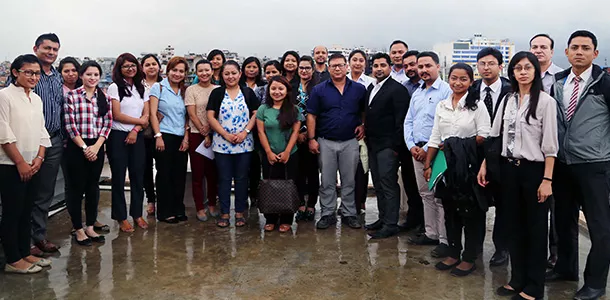
COVID-19 Pandemic Outbreak: How Can We Respond?
Category: HR News | Date: March 18, 2020, 3:05 p.m. | Total Views: 3292
The development of the COVID-19 pandemic outbreak has begun to impact business operations for organizations. The World Health Organisation (WHO) on January 30 declared it as a global public health emergency. Since the outbreak of COVID-19 and its rapidly spreading situation, business continuity professionals around the world have begun the process of implementing or reevaluating their pandemic preparedness strategies. Those who did not have plans realized the need to address supplier, customer, employee, and other stakeholder concerns, even if the business was operating as normal.
In such a rapidly evolving crisis the employers need to be agile and prepared for employees’ care/workplace safety along with addressing concerns of their clients/customers, partners, vendors/suppliers and other stakeholders. How your organization handles such crisis can have a significant impact on your business.
At the current stage, this emergency outbreak has been a heightened concern at global context since the ultimate impact of outbreak depends on how quickly and effectively the preventive, detective and controlling actions and methods are implemented at various levels (at national, public and private level).
In order to respond to this emergency outbreak at organizational level, the proactive step is to urgently regulate pandemic policies and procedures (e.g. Infection Disease Control Policy or other Specific health and Safety Standards), strive to operate effectively and ensure that all the essential services are continuously provided insuring that the employees are safe within the workplace in the event of an infectious disease outbreak before, during and after a pandemic.
Managing COVID-19 Pandemic Outbreak by implementing best practices:
Develop the pandemic plans and policies for responding the outbreak that may include but not limited to;
- “Send home” Policy for when employees become ill or exhibits symptoms of a communicable disease.
- “Return to work” policy a method to verify employees are no longer contagious.
- Allowing employees to work remotely or to take paid sick leave (at reasonable basis).
- Flexible work hours (multiple shifts)
- Telecommuting/flexible work-site considerations
- Employee compensation/payroll continuation
- Visitor restrictions/bans
- Establishing policies related to vaccination mandates and recommendations
- Formation of “Emergency Response Committee/Team” within the workplace
- Update employee emergency contact details
- Update and circulation of hospitals contact details
- Develop the tracking system of sick employees and take regular updates
- Tracking compliance and implementing disciplinary measures for employees who abuse sick leave or time off
- Encouraging good hygiene practices to prevent the spread of disease (washing hands properly and regularly, coughing into your elbow, and making sure commonly touched areas are sanitized)
- Educate employees and other - to use only relevant and factual sources of information
- Establishing social distancing guidelines for workplace such as;
During the work day, employees should be requested to:
- Avoid meeting people face-to-face (instead of, use the telephone, online conferencing, e-mail or instant messaging to conduct business as much as possible).
- Avoid person-to-person contact such as shaking hands and hugging.
- Avoid any unnecessary travel or cancel or postpone nonessential or less essential meetings, workshops, training sessions and gatherings.
- Avoid gathering at lunch room or cafeteria and have your lunch away from others.
- Encourage members and others to minimise person-to-person contact. Have the orders, materials/documents and information ready for fast pick-up or delivery.
Outside activities- Employees might be encouraged to the extent possible to:
- Avoid public transportation or go early or late to avoid rush-hour crowding on public transportation
- Avoid recreational or other leisure classes, meetings, activities, etc., where employees might come into contact with contagious peoples.
Conclusion:
COVID 19 outbreak put crisis management processes and pandemic preparedness strategies to the test and in many cases, this unprecedented public health crisis is going to be a trial by fire. Due to a lack of infectious-disease management plan and an effective pandemic plan to respond quickly, many organizations have scrambled and suffered in managing their people and workplace which may eventually put the entire business into risk. Employers not only have to deal with the current outbreak but they also must prepare for long run since it is a pandemic and if not controlled soon, it could materialize stronger and faster than ever. Therefore, a key part of preparedness is always having as many answers and restoring mechanisms as possible before the scenario becomes worst.
Sources/References:
- Human Resource Policy Considerations during a Pandemic, Ryan Hutton, May 27, 2009
- Official websites of: World Health Organisation (WHO)
- Society of Human Resource Management (SHRM) (Coronavirus specific information)



